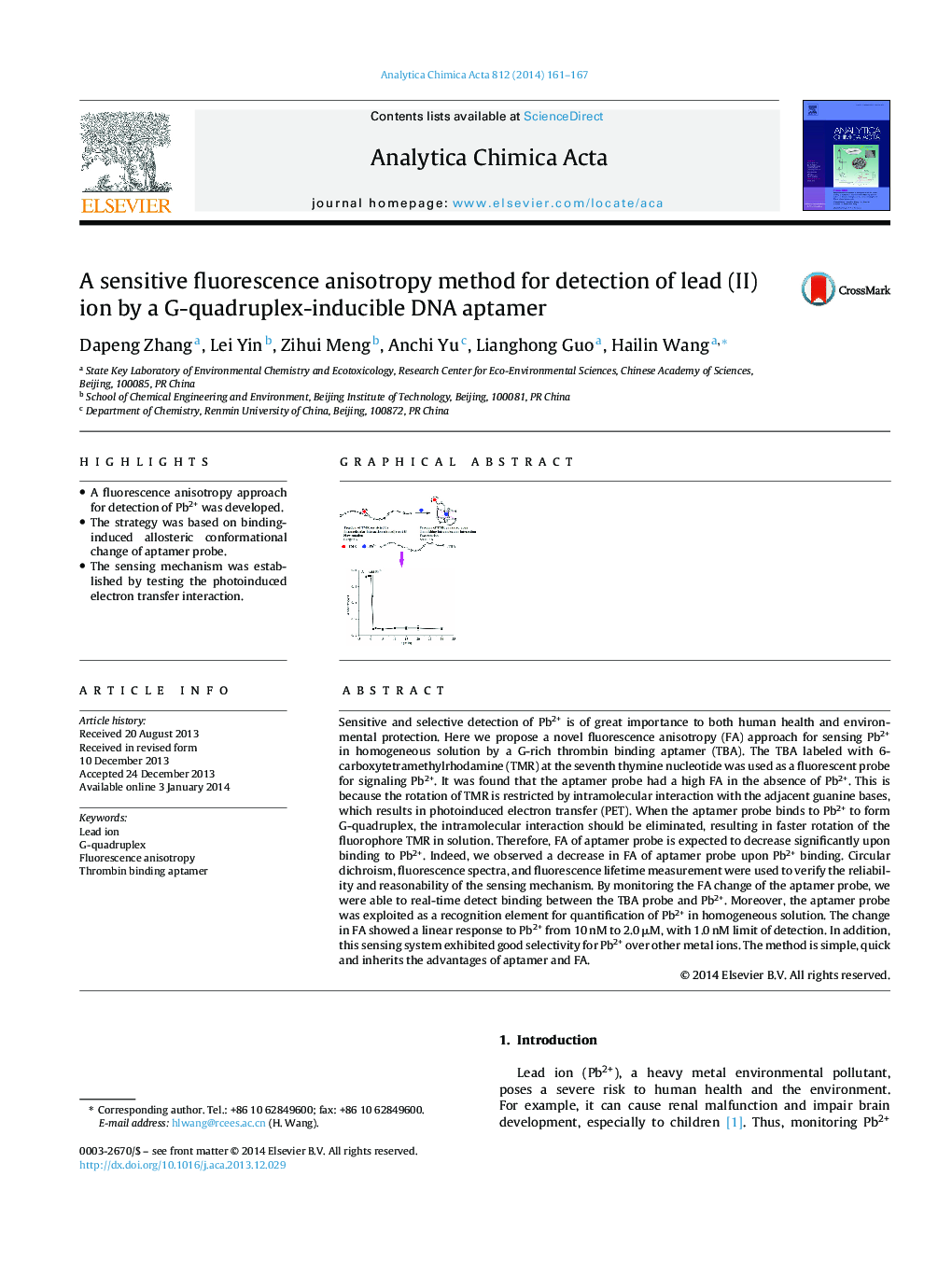| کد مقاله | کد نشریه | سال انتشار | مقاله انگلیسی | نسخه تمام متن |
|---|---|---|---|---|
| 1164147 | 1491020 | 2014 | 7 صفحه PDF | دانلود رایگان |

• A fluorescence anisotropy approach for detection of Pb2+ was developed.
• The strategy was based on binding-induced allosteric conformational change of aptamer probe.
• The sensing mechanism was established by testing the photoinduced electron transfer interaction.
Sensitive and selective detection of Pb2+ is of great importance to both human health and environmental protection. Here we propose a novel fluorescence anisotropy (FA) approach for sensing Pb2+ in homogeneous solution by a G-rich thrombin binding aptamer (TBA). The TBA labeled with 6-carboxytetramethylrhodamine (TMR) at the seventh thymine nucleotide was used as a fluorescent probe for signaling Pb2+. It was found that the aptamer probe had a high FA in the absence of Pb2+. This is because the rotation of TMR is restricted by intramolecular interaction with the adjacent guanine bases, which results in photoinduced electron transfer (PET). When the aptamer probe binds to Pb2+ to form G-quadruplex, the intramolecular interaction should be eliminated, resulting in faster rotation of the fluorophore TMR in solution. Therefore, FA of aptamer probe is expected to decrease significantly upon binding to Pb2+. Indeed, we observed a decrease in FA of aptamer probe upon Pb2+ binding. Circular dichroism, fluorescence spectra, and fluorescence lifetime measurement were used to verify the reliability and reasonability of the sensing mechanism. By monitoring the FA change of the aptamer probe, we were able to real-time detect binding between the TBA probe and Pb2+. Moreover, the aptamer probe was exploited as a recognition element for quantification of Pb2+ in homogeneous solution. The change in FA showed a linear response to Pb2+ from 10 nM to 2.0 μM, with 1.0 nM limit of detection. In addition, this sensing system exhibited good selectivity for Pb2+ over other metal ions. The method is simple, quick and inherits the advantages of aptamer and FA.
Figure optionsDownload as PowerPoint slide
Journal: Analytica Chimica Acta - Volume 812, 17 February 2014, Pages 161–167